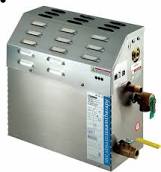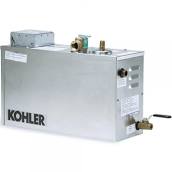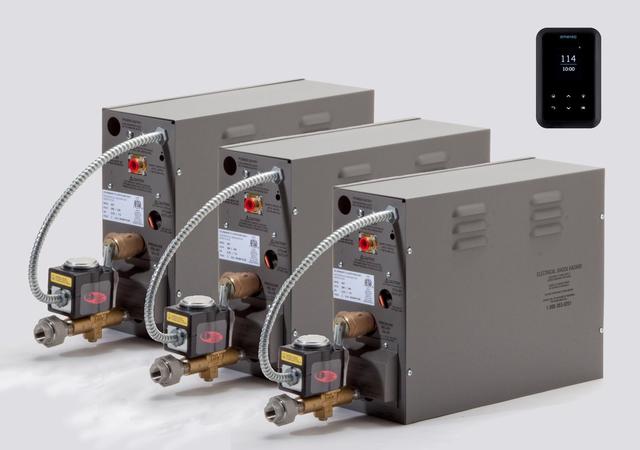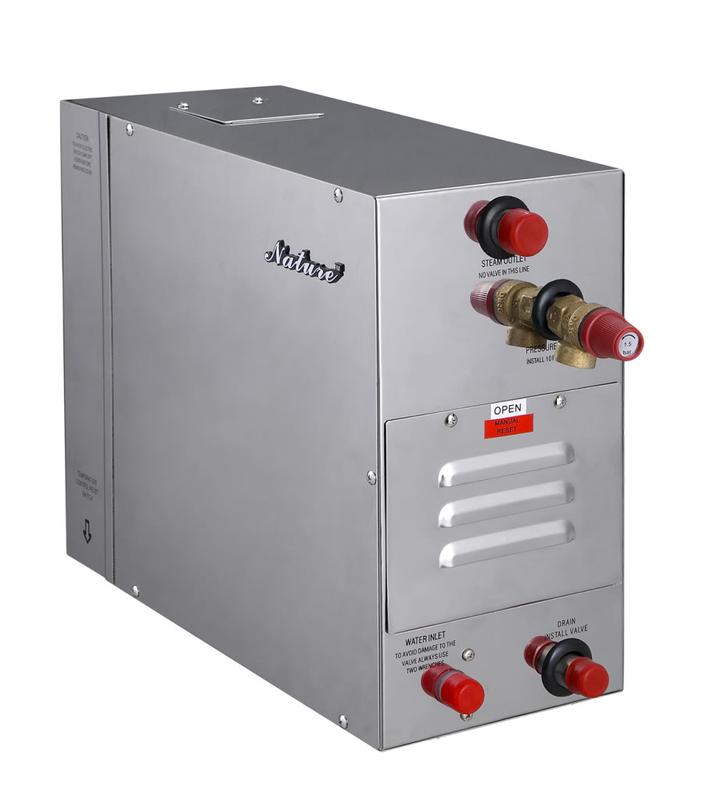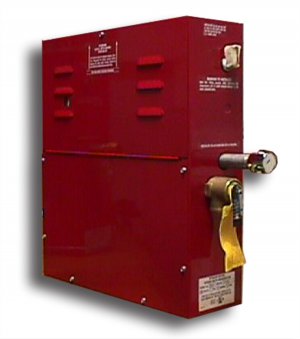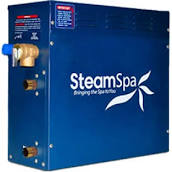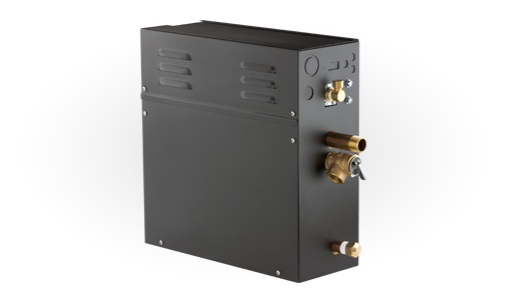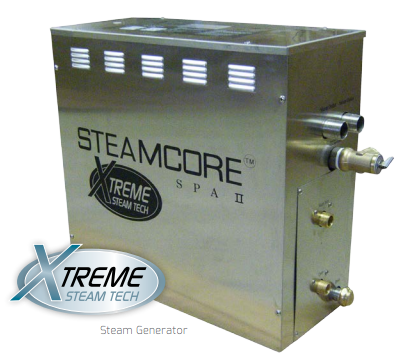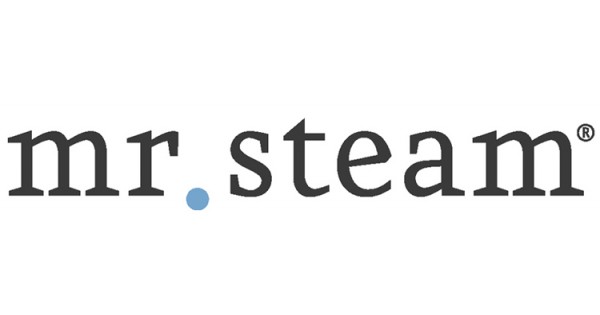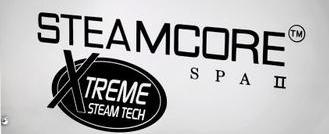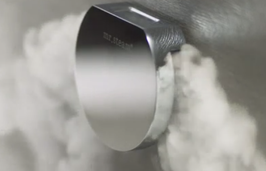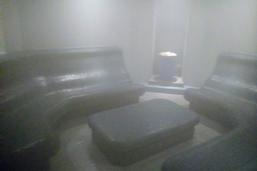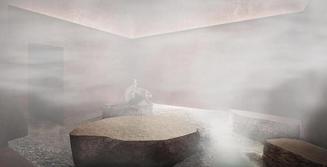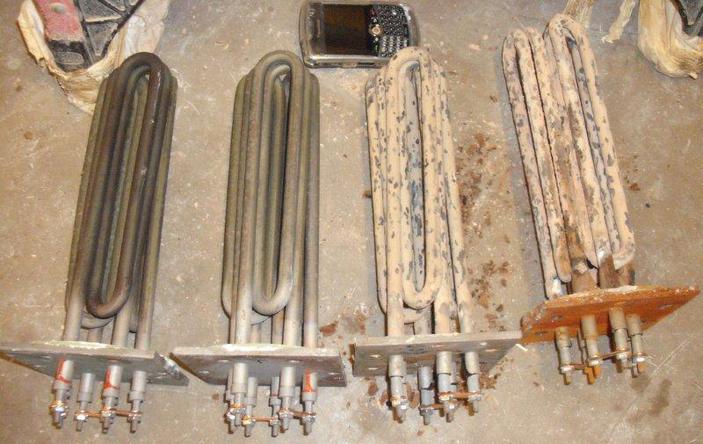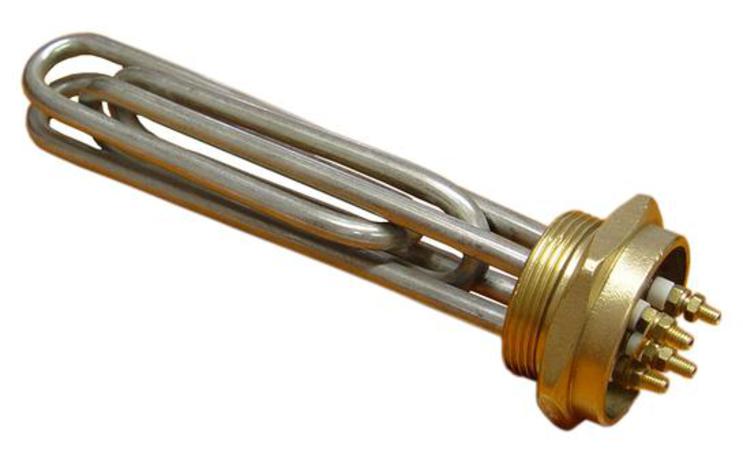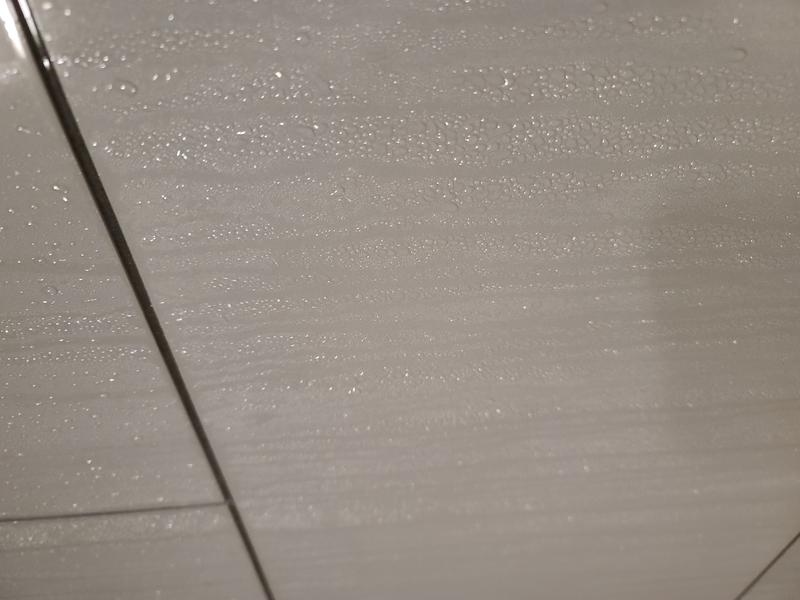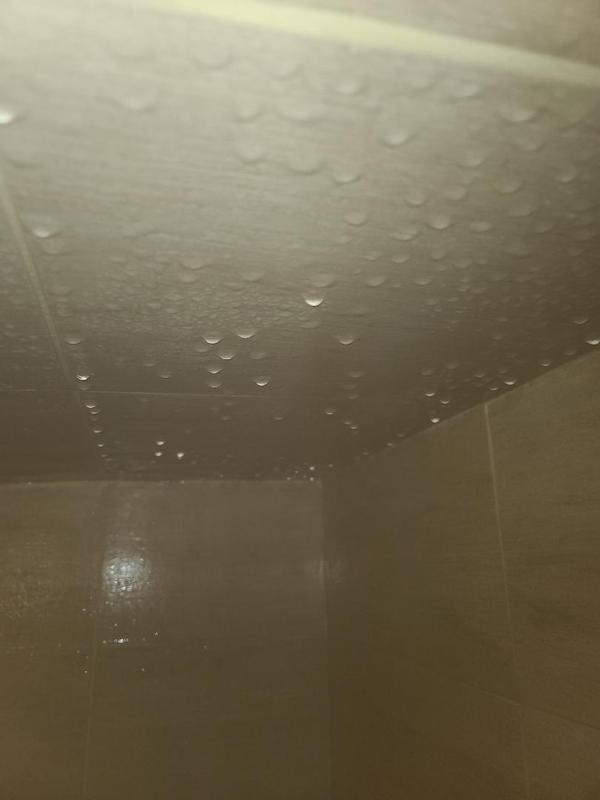Steam Spa - Steamist - MR. STEAM - KOHLER - Amerec - STEAMBATH - THERMASOL -Whirlpool - ROMA - STEAMCORE
Latest Review:
1-877-310-8385
Open from 8am till 10pm
Ask for Alex
1-877-310-8385
Open from 8am till 10pm
Ask for Sharon
SteamReviewed.com
There are 3 types of steam I have differentiated
Wet - this has a lot of moisture in the steam vapor, low psi pressure boiler tank, high density heating elements
WetDry - This steam has a higher dew point, hotter boiling tank with a higher pressure, lower condensation rate
Dry - Steam is at nearly 100% of its vaporization point, close to 95% dryness, dry steam will create the lowest latent heat in the steam room. When the steam is gone, the room doesn't feel as hot.
Below are some of the things that Tier 1 brands have in commont
Tier 1a - Steamcore, Thermasol
Tier 1b Mr. Steam
High PSI vs Low psi boilers - common for Tier 1 brands - biggest thing that sets tier 1a and tier b apart
PSI of Steam generator: the steam generators that give off the one type of heat that use less water to heat up the room and a higher latent heat usually have 15 psi valves. Some models release their steam at a lower psi (that don't have a sealed boiling chamber) and the vapor stays in contact with the heating elements much longer. The most expensive heating elements are the jumbo size incoloy heaters. (I make sure they are surgical steel heating elements, not galvanized metal or aluminum that can leach impurities in the steam). Non galvanized oncology heating elements are super expensive and they create a vapor that is not like that drippy steam that many people find uncomfortable. Surgical steel incoloy heaters cost about 4 times as much as the average heater found in most steam generators. Some generators have high psi boiling tanks compared to other brands with the same wattage. A 9kw non-sealed steam generator and a 9kw sealed generator brand can deliver the same 2 gallons of water per 20 minute session. One will deliver 2 gallons of vapor while another brand delivers 1.5 gallons of vapor and 1/2 gallon of water in the air that did not vaporize at all which makes a very wet steam.
A surgical steel boiler such as the one in a non-sealed steam generator will usually add $600 to $800 to the cost. It will cost at least that to get the dry steam that is that soothing steam vapor that most people want. Galvanized and cast aluminum boiling tanks usually have a lifetime warranty. These are much easier to clean and maintain but can change the TDS of the steam as calcium deposits have a harder time sticking to these materials. I prefer a steam generator that has a steel boiler even if it is harder to maintain unless it has a really good automatic cleaning system.
Sizing a generator - what kilowatt size is the right size - THIS IS BS AND COMPANIES HAVE ADMITTED TO ME WHEN I ASKED THEM DIRECTLY. I KNEW SOMETHING WAS FISHY ABOUT THESE CHARTS. I WAS CALLED BY A PRIVATE NUMBER FROM ONE OF THE COMPANIES THAT EXPLAINED EVERYTHING TO ME.
So, if there is a window in the steam shower, this can condense the steam and make it wetter. If the ceiling hight is 10 feet that can drastically effect the steam quality. Rarely people like their feet to stay cold and the hottest vapor above their head. (Some of the sizing charts say that you ned a 12KW generator since you have 450 to 550 cubic feet but the manufacturer’s sizing chart was basing this on an 8 foot ceiling. If someone has a ceiling over 8 foot, this changes everything. Please notify me on my steam quiz. This can change everything when recommending a size. But, this is not the real issue I want to get out. Companies based on what I was told and it really makes sense to me is that companies don’t want to be sued. These are based on not getting someone’s heart rate over 150 beats per minute in less than 10 minutes. Some steam generators take 15 minutes to get me to that rate. If they pick you out the wrong size and it is burning your nose when your breath since the size is too large, most people will want to return it. If the steam is not enough, people will want to return it. I was told they only want you to have just enough fluence and steam that you won’t think about returning it. So, it’s really all about money and making a profit. They would rather sell me a generator that produces a little less steam than I would want rather than giving too much and taking the chance I would return it. (I do get returns this way and I can sell these around the same price as the new scratch and dents I get at deep discounts.
Note: not all 10kw steam generators are the same. Some steam generators produce a cloud when you open the door that dissipates within seconds while the higher end models give a cloud that lingers. It’s more of a vapor cloud. This is the dry type. The wet type dissipates much quicker.
One Heating element VS multi heating elements
The average steam generator has smaller heating elements and has more of them. The models with higher psi that make drier steam usually have smaller heating elements that must have a boiling tank that can withstand the pressure and heat. The heaters can be smaller when the heat builds up under pressure and doesn't require as large of heaters . Incoloy heaters create the most heat and must have a 15 psi release valve, not the average 10psi if they are the smaller type heaters.
The single heating element tanks are a thing of the past and are on or off. The latest steam generators have 3 or more heating elements that can give more control of the heat. The hardest thing to control is keeping the temperature from getting too hot in the steam room. Some newer models have “proportional” steam to keep it under control. If the generator is producing very dry steam to start with then the added moisture in the air is not their anyway and doesn’t need the steam to cut on and off so much. I hate when half the time I am in the steam room no steam is coming out. But, I don’t always like continuous heat either. It is not fun to be in a steam room that fluctuates the temperature the entire session. A 9kw steamer should have three 3,000 watt heating elements. A cheaper one would have two 4500 watt elements. The lower the wattage the lower density per square inch on the element. Less stress on the elements means less replacements.
Note: Galvanizing is a zinc coating on the heating elements helps resist corrosion and rust but once this coating comes off they will need to be replaced. If the boiling tank is also galvanized with zinc, over time this leaches out into the steam. I don't like breathing in steam that is not pure. It will flake off over time, especially if they get too hot from people pouring water over the sensor to give more steam and over heating the elements.
Dew Point - (when the steam is too wet, the room gets to 100% saturation too fast
So many steam generators condense the water too much when the steam comes out too wet. The biggest problem and most complained about problem is when the steam room gets too hot and can’t hold any more steam. The water starts dripping from the ceiling. The walls are too wet. Even with the steam generators that produce the driest heat, if too much is coming out the vapor will condense into water much sooner. There are many tricks to get the room to maintain dry steam and lower the dew point of the steam room. Some steam rooms have a lower dew point and can’t hold any more steam. This is when in a steam generator it cuts off and I am like wait a minute, this is not cool and someone takes their cup of water and splashes it on the thermometer to trick the generator to make more steam. I am sure many people know what I am talking about if they have been to a steam room at the gym.
Note: I urge people to get the right size wattage the first time. It can be very expensive to return the generator and pay 1000 dollars to reinstall it. Plus, shipping it there and original shipping to you and a cleaning fee which is usually another 150 bucks. So, I urge people to take my steam quiz. Using a sizing chart doesn’t mean your steam is going to be dry or get you that cloud that lingers that many people prefer.
Steam fluence: Some steam generator put out the steam fast and others it comes out slower. The more that comes out fast especially on the cheaper models it usually is the wetter steam that is sticky and uncomfortable. Also, some generators create steam really quick as they always have very warm water in it that takes it a very short time to boil. This can eat up electricity big time. Other types have run a lot of electricity through the water and it creates steam in about a minute. I prefer a good solid steam generator and I am not looking for this quick heat up time. That extra few minutes people are trying to save is really costing them in other ways. They can get a lower quality steam vapor. They need it so fast that the heating elements don’t super heat the steam to give a dryer vapor. Most people that call me up and seem to be hurried and frustrated and want me to make a quick decision for them usually tell me they don’t wanna wait long for their steam. They want it to start in less than 3 minutes. Oh well, because waiting for the steam to build up pressure at a higher psi is worth waiting for.
Note: These fast start up generators with these high density small heating elements create a very low dew point in the steam room. A steam room with a dew point less than 60 is uncomfortable and not the steam room I want to be in. It’s just not enjoyable unless you know the difference between a better one. There are some steam generators that I know just by opening up the door and letting the steam hit my face I know if the dew point is risen over 65. It’s that sticky feeling that is characteristic of just plain wet steam that makes me want to get out before 10 minutes. It’s not enjoyable at all. When the dew point is over 70 this is when the steam in the steam room actually bothers me. The high end steam generators that have only surgical steel components and the latest technology in steam generation can produce steam in the low dew point range much lower than 60 which is the average among the mid range brands.
Note: Mr. Steam and Steamcore are alike in the same way that they pulse on and off and are not the continuous type like Thermasol and SteamSpa out of Florida. With Steamcore and Mr. Steam, one has a sealed pressurized boiler and the other doesn't. Steamcore takes about 3 minutes to start giving off steam but since steam rooms using the Steamcore have a lower latent heat and higher dew point, it does take it longer to heat up the room. Those that appreciate super dyer steam don't usually mind the wait.
Thermasol and SteamSpa are very similar. The biggest difference with Thermasol and Steamspa is that one has blootooth and a fancier control panel and the other doesn't. The continuous steam types take about 30 seconds to produce steam as the element turns red and then water is cued in. With Steamcore, the water fills up and the heaters never turn red in the water.
Steam generators that feel uncomfortable: These generators produce wet steam way below 90% wetness. These are so uncomfortable to go in as it seems sticky. Most people feel very stick when they try to perspire in this type of steam room that has too much water droplets. The wetter the steam in the room, the harder it is for our body to cool ourselves off and is the reason why cheaper steam rooms that produce under 90% dryness actually feel hotter and makes people want to get out sooner. These steam rooms feel hotter but are very uncomfortable to stay in as long compared to the dryer type steam generators.
Note: the steam generators that produce more vapor type steam with a lower cluster size can bring more vapor into the steam room without heating the room temperature too high making it feel uncomfortable. The wetter type steam has less steam vapor and generates more heat. The best steam generators that make the most comfortable steam create steam with a lower dew point that lets more vapor in before it all starts to condense. The higher end incoloy heater type boiler steam generators create higher dew points that is hard to get with the average steam generator.
Cold spots: If the room is over 8 feet, that extra foot makes a difference between a nice steam and feeling the cold spots. I am not talking about when the steam room is cold around my feet. When sizing a steam generator, one extra kilowatt may be needed to avoid the cold spots but if too much steam is coming out then it can turn it into wet steam while the dew point of the steam room is lower.
Hot spots - too wet steam makes my noise burn and gives me a headache. This is the steam that when you go in the room it is really hot near the ceiling but cool around the legs and feet. The cheaper steam generators that produce the wetter type steam and have lower dew points. With generators that produce this type of steam it is hard to stay in longer than 10 minutes. Too much wetness makes the steam room hotter but I am not getting the vapor that I want.
Full spectrum steam generators - These have a balance that does not create an uneven cloud that only fills up half the room and leaves little to no steam around the feet and legs. Full spectrum steam is super dry and there is much less condensation that makes water droplets like the steam that seems to drip constantly in your face from the ceiling. Full spectrum steam only happens when the dew point is under 60. The generator must be very close to the steam room and must have walls that help with lowering condensation. Someone can have the best generator but if the room is not good the steam can feel like a cheap generator that makes wet steam when the one you bought puts out dry steam. It just takes a few mistakes to turn dry steam and prematurely condense it to wet steam
Uncomfortable steam: I get asked what is the best steam generator. It is the one that creates a higher dew point for the room. I hate when the steam cuts off when it gets too hot but the steam vapor has a low saturation. It is when the steam cloud goes away very quickly and doesn’t linger like the dryer steam that has a lower cluster size since it was heated more and came out of the steam head at a higher pressure. This very dry type of steam is a little bit louder coming out but with a high psi steam generator this is only con I can think of. Uncomfortable steam has that muggy and sticky feel. Low quality steam also sticks to the walls more as the vapor is hotter but more dense. Dry steam vapor comes out as less dense but hotter. What else makes uncomfortable steam
10 min vs 15 min sessions -
Most generators make a heat that lets people stay in 15 minutes that will raise their heart beat to 150 beats per minute. This is if you buy their steam generator based on what they recommend on their sizing chart which I disagree with based on the type of steam most people want. A good dry steam with a low dew point should make me want to take a cold shower in 10 minutes, not 15 minutes, but for the average person, they have to take into consideration that someone might use their generator who has a heart problem or some reason they can’t handle really intense heat. I personally don’t like mild steam rooms. I’ve been to the best steam rooms at the best spas and been in sweat lodges that were done by masters. I compare the best steam generators to these experiences.
Note: Some people have 7 foot ceilings and most people have 8 or higher. For those that have a 7 foot ceiling in their steam room, the room will be set for the most uniform steam without cold or hot spots that people complain about. I urge people that have ceilings over 8.5 feet to get a steam generator that has 2 heating elements with 2 thermostats. If over 9 feet high, I would recommend a higher psi boiler that has incoloy heaters.
The biggest decision to make before deciding on a steam generator brand is to ask myself do I want hot steam but with a lower dew point or do I want a more tolerable steam with a higher dew point. Most people never get asked this question or know to really think about this. I don’t really trust most manufacture’s sizing charts as they don’t take all these other things into consideration that I do. Some people with health issues can’t handle raising their heartbeat over 100 beats per minute in a 10 minute session when they started out at 75 beats per minute. Most people when they go in any steam room are pouring water on the thermometer trying to get less pause time and more steam time. Most people want to raise their core temperature higher faster. Those that buy a size larger than they should get have more steam and it can raise their heartbeat to 150 beats per minute in that same 15 minute time but it is very uncomfortable and sticky if the generator is producing wet steam with a high dew point. If someone wants a more intense steam that is dryer these cost much more than the average generator.
Note: Every time the manufacturer gets them in their is always a few scratch and dents that may have cosmetic blemishes or a small dent in the steel frame. I get these much cheaper and usually is the only way that people can afford the really expensive models. Contact me if you want one of these or be put on the list when the manufacturer gets them in.
More about dry steam -
Dry steam from the highest end steam generators can produce steam that is 95 to 98% dry. The other percentage is moisture which is referred to as the wet steam that no body likes. For anyone that has every been in a very dry steam room, it is hard to go back to a brand that is even 5% wetter than you are used to. The best steam generator can produce a steam that is 95% dry. Only a few steam generator brands can produce 95% dry steam. The ones that produce dryness in the 88% to 90% are much more affordable and the brands that most people get. Those that are interested in getting their steam over 95% contact me and I will share different methods based on the steam room you are building.
Note: 95% dryness will never happen if steam condenses in the pipes and the if the wrong size generator is bought from undersizing. Many people don't realize that a pure steam is just as important as a dry steam. I only use generators that use surgical steel tanks and all the elements that touch the water must also be surgical steel, not galvanized steel.
Dryness tip: dry steam can become wet due to turbulence from splashing against the floor or wall when it comes out of the steam head. This can cause more water droplets in the steam taking about 5% of the dryness away.
Note: I only promote steam generators that have 90% dryness and no more than 10% wet steam (water droplet moisture that the steam generator process fails to turn into a steam gas). Dry steam is the most expensive steam to produce and steam generators that produce a dryer steam are built with lower density heating elements and a lower wattage per element. Cheaper generators have higher density elements with high wattage per element.
Cheap steam generators: These do NOT vaporize all the water during the steam generating process. These usually have galvanized elements, aluminum tank (cast aluminum), and electronics that are not ETL or CE approved. CSA is the strictest. Steam generators that have a CSA approval are almost all tier 1 brands. Advice, I won't promote any steam generator that didn't get CSA approved.
Note: If you buy a tier 1 steam generator, even if it is a generator that puts out very dry steam, until the room is at a certain temperature, the steam will only get to that dry level once the walls and seat are at a certain temperature.
Another way to compare heating elements to psi - to create a vapor with lower moisture
The longer the steam vapor is in contact with the heating element, the hotter it will get. Lower quality steam comes from generators that steam in the boiler has little contact time with the heating elements. Some have jumbo size heating elements and release steam quicker. I always want to know the psi of the boiling tank when doing my research. If looking for a drier or wetter steam, I always want to know if the boiler is sealed and is a pressurized steam generator or it is un-sealed and is not. One type produces a lot more steam density and is wetter and the other less steam that is dryer. Steam under pressure is good for those that want this type and are used to that type. I will say that once I experienced a steam room with vapor close to 95% dryness I knew the difference.
Steam Build Up Speed - Tier 1 steam generators tend to build up steam much faster than the lower end brands. The thing that sets the steam generators that make dryer steam with a lower dew point apart is that they release the steam once nearly all the moisture has been vaporized. If the steam room is cold it can condense it quick no matter how dry the steam is. If the steam builds up too quick and releases too quick because the release valve is set to a lower pressure, this can lead to a very wet steam. Many people want a steam generator that produces steam quickly after they turn it on. The best steam generators vaporize nearly 95% of the water before it is released. This can take longer than the brands that advertise quick steam.
Note: if too much steam comes out and heats the room too quickly, they will shut off. It is the heat of the room causing it too shut off, not necessarily too much steam. Dryer steam doesn't heat the room up as much and is much more tolerable at higher temperatures. With dry steam, the on time should be much longer than the pause time when there is no steam coming out. The less moisture there is in the steam vapor the less pause time of steam. I don't like sitting there waiting for more steam to come out. The problem with may of the pulsed type brands and why many people want the Thermasol or Steamspa is that most pulsed types cut on and off and give off a lot of steam and then comes back on when all the steam is gone. This is because the latent heat is still in the room and the most of the steam is gone. This is the wet type. Pulsed types with pressurized boilers release all the steam when it gets too a certain pressure and it has to build up again creating a longer "no steam time". The dry type steam pulsed type generators work differently. The latest generation pulsed types have a 3 degree differential. This means that when the room gets 3 degrees cooler it will let out more steam or if it gets 3 degrees hotter it will shut off. So, with the newer generation pulsed models you should never be there sitting and waiting for the steam to come back while the steam room has gotten cold. If you set it to a certain temperature it will stay there within 3 degrees the entire time. There is always going to be a lingering cloud unlike the older types that are pressurized give off the load of steam and doesn't maintain a constant cloud.
Also, with the newest generation pulsed generators that weren't around just a while back, the cueing system is more advanced. When the water level probe drops just 3mm, the unit calls for more water to bring it back up. This is characteristic of the non-sealed boiling tanks. The brands that I do not approve of shoot out steam every few minutes and the room temperature goes up and down. No consistency. All I get is complaints on these models. With Steamcore and Mr. Steam, one is a wetter type, one is dryer. But, one has more fluence than the other. One heats up the room for those that want to come in from the cold and warm up. Other people want the benefit of steam vapor at its driest. There are advantages and disadvantages of the wet vs the dry type. If you don't know what you want or don't have that much experience with each type, take my Steam Quiz. That will usually pinpoint the type based on your answers. Mr. Steam and Steamcore have very consistent steam. I urge people before they buy to research if they should get the sealed type (pressurized steam) or the non-sealed type.
Choosing a generator size based on your steam room -
When I know the materials in the steam room (marble, ceramic, stone, glass, porcelain tile?), then find out how many walls are in the steam room and the height (more walls make the steam wetter). Getting the right kilowatt size is one thing but buying finding the brand that will give a dryer or wetter steam is not part of most “manufacturer charts” equation. Then getting the ceiling height, how far away the generator is from the steam room, and other factors will help decide on the right size model and which brand to get).
Not many people like the feeling of a steam room that feels like a muggy hot summer day in Florida. This is saturated steam at its most uncomfortable. The steam generators that I do not approve of make this type of wetter steam. I like my steam extremely dry and very hot.
Steam Quality -
I urge people to get a good carbon filter before the water enters their steam generator. Calcium can also build up in the generator and pipes making the steam quality poor. Also, the longer the distance the generator is away from the steam room the wetter the steam will be. What really bothers me is when companies tell people to get a large size to make up for the heat loss but don’t bother to mention that all that’s going to do is make the steam wetter.They just make people think buying bigger will compensate for the steam loss. Those that follow these instructions and still keep their generator far away from the steam shower will still get the steam they would have loss but end up buying the larger size model and never get to experience a higher quality steam with a higher dew point
Many people buy steam generators that produce too much moisture and not enough vapor. Most people buy the wrong one even though it gets the steam room at 100% saturation. Poor steam quality in my opinion has a steam percentage lower than 95%. The really cheap brands are way lower than 95% and people never know what real “feel” good steam is because they never experienced it.
Most mid price generators give a steam that has a dryness of around 70 to 85%. The really cheap ones coming out of “certain countries” have a dryness of usually around 50%. Their steam usually comes from one big boiler head and puts out so much steam than can actually be turned into a gas first. People get these and think wow,, this puts out so much steam but never realize what they are missing. The only thing they experienced was a steam with a dryness of 50% what the driest steam brands can give.
PSI -
A 9kw generator from one brand can produce totally different steam than another brand that has a higher pressure in the boiling tank and has larger heating elements with greater surface area to super heat the water. The cheaper brands that produce the wetter steam boil a gallon of water much quicker as it is under less pressure to release the steam in the release valve in the sealed type generators. The steam generators that produce a higher dew point and dryer steam let the steam out as vapor. Some same wattage generators can produce 16 pounds of steam per hour while another brand with the same wattage produces 24 pounds an hour. That extra weight is what people get confused about. That is not extra steam. That is 8 pounds of moisture that is mixed in with the steam.
Low density heater - surgical steel incoloy
Non surgical steel incoloy heater - industrial stainless steel heater - this is what a galvanized metal heater looks like - lime build up. Those with certain types of water can end up with heating elements like this in 6 months.
The brands that create very wet steam make it hard to keep your head up as too much heat burns my nostrils and burns my eyes. But, if I lower myself its just not enough. Many people get generators that create too wet of steam and pick out the wrong size generator. Also, if the generator puts out too much steam, it will heat the steam room too quickly and it will pulse off too soon and not produce steam. This is when many people pour cold water on the sensors. With wet type steam, the latent heat is so high that it is not comfortable to sit up really high.
Final notes:
When their is less moisture in the steam, it holds less heat. It heats the room less and the generator can stay on longer making steam. Open tank steam generators stay on close to as long as the continuous type like Thermasol but drier.
Also, for those buying a steam generator 10.5 watts or more, I urge anyone to make sure if it has 1 or 2 steam heads. One type will make dry steam and the other will make the steam much wetter. If the tank is not pressurized (sealed boiling tank) it needs 2 streamlines coming out of the same generator to reduce moisture in the steam causing the steam session to be without steam nearly half the session which is one of the most complained about when I get calls.
The 9kw steam generator size is the most popular size I sell. That that get a 10.5 watt will add about 20% more steam. People should be very cautious about upsizing one size up as this can only make the steam wet once the room reaches saturation sooner than the heat can dissipate. The biggest decision to make is getting a generator that is sealed vs non sealed, a lower vs a higher psi release valve, 1 or 2 steam lines (if 10.5KW or over), and making sure the tank is not galvanized.
Note: some heating elements on certain brands use stainless tubing steel. This is not the same as low density surgical steel heaters).
For steam generators in my Tier 1, I will go over the differences between Thermasol, Steamcore, and Mr. Steam. Each has its on pros and cons and I will pick out the brand and size based on your answers. I will say that most people who think they know what brand they initially want usually is not the one I recommend based on the answers. Take my Steam Quiz below.
Steamcore - SPA 2 - Tier 1A
Non-Pressurized Steam 6 degree variance continuous
Mr. STeam - Tier 1b
Pressurized Steam - pulsed
Thermasol - Tier 1A
Non-pressurized Steam - continuous steam
STEAMCORE VS. MR. STEAM VS. Thermasol QUIZ
Below is a separate steam quiz than my main quiz. This is for people that want a Tier 1 steam type. These questions are picked out only to choose from Tier 1 brands (Thermasol VS Steamcore VS Mr. Steam)
Based on your answers, I will only choose from those 3 brands (Steamcore, Mr. Steam and Thermasol)
There are pros and cons to continuous and pulsed type steam generators that have shorter duty cycles where lots of steam comes out at once and then it pauses till the next steam comes out much longer than a continuous type. So, the pulsed type can let people take a break to let their heart rate go back down while the steam is building up in the generator but the steam is usually wetter in the pressure cooker types. The continuous doesn't let people have that rest time in between steam sessions like the pressure cooker types but the non-pressurized type benefit is that it is usually very dry so it is easier to breath. Either way, both should heat the persons core up at the same time even if the pressure cooker type gets cool and hot while the continuous type can stay hot and hot/warm the entire time.
Please give me feedback on my site!
(good feedback=discounts
comments:
I will NEVER share your contact information without your permission!
Thanks!
1. How long are you planning to keep the steam generator on at one setting)?
2. Whats the main reason you want steam therapy?
3. Where are you putting the steam room?
4. How big is the room you are trying to steam?
5. Do you want that itchy feel quick or not from fluence dry steam?
6.Do you care where it is made?
7. Are you sensitive to EMF)?
8. How dry do you want your steam (cluster size of water (vapor size)?
9. The mineral content of water has an effect. Suspended solids makes a poor quality steam and can rust the elements
10. Do you care if it is UL listed, CE and NOM certified.?
11. Will the steam room be where there is lots of heat loss?
12. Is noise level an issue where you plan to steam?
13. Do you want a continuous or pulsed steam?
14. How intense do you want the steam?
15. Are you going to put salt rocks under the steam head?
16. Are you going to be connecting a gravity fed 5 gallon water bucket to the generator?
17. Which grade of steamer do you want?
18. Do you prefer a particular brand?
If other, which one?
Name
Email
Number
Best time to call
Time Zone
24. How far will your generator be from your steam room?
19.What price range are the steamers you want to stay within?
31. Most important question of the quiz: Check off any that will be in your steam room.
26. Would you prefer a scratch and dent generator or returned generator from someone that bought the wrong size?
20. Are you ceilings going to be slanted or flat?
21. How tall will your ceiling be in the steam room?
22. How long do you want to stay in before your core heats up too much before you want to get out?
23. Do you prefer a wetter or dryer steam?
If the steam is too wet and the latent heat is too high it will be harder to enjoy the steam longer. Heart rate will go up to fast.
Steam that is from low pressure boiling tanks are the drippiest. Drier steam is more gassy and less drippy.
27. Are you installing a marine grade waterproof fan for a more uniform steam?
There is really needed if the ceiling is over 7 feet. 12 inches makes a huge differences where the fan brings that steam down from over your head.
28. Are you sensitive to any odors or metallic smells?
Cast iron has the worst smell over time. Galvanized stainless steel can also leach down the road. Surgical steel is the purest steel for steam generators.
29. What kilowatt size steam generator were you recommended to get?
If you don't know leave blank
30. If you have been in a sauna where you pour water on the hot rocks, do you like the feeling of that dry steam?
25. Do you like your steam so dense that you can't even see the person in front of you?
I urge people to first take my steam quiz and then take my sizing quiz. Here are a few pictures of steam that is too wet (too high of a condensate) and it drips nearly the entire time and it is just too wet to enjoy the steam for people who are expecting a steam with a higher dryness and less moisture.
